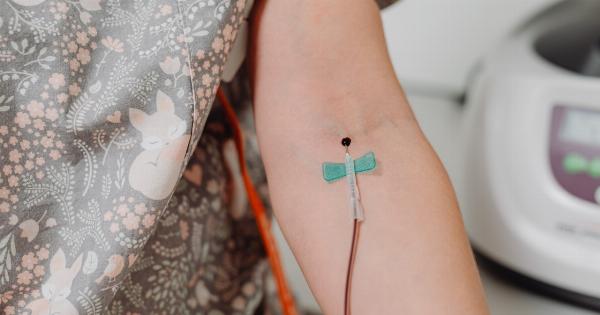Swollen legs can be a symptom of various underlying health conditions, one of which is chronic venous insufficiency (CVI). CVI is a condition that affects the veins in the legs, leading to poor blood flow back to the heart.
This article explores the connection between swollen legs and CVI, including the causes, symptoms, and treatment options available.
What is Chronic Venous Insufficiency (CVI)?
Chronic venous insufficiency (CVI) occurs when the valves in the veins of the legs are weakened or damaged, hindering the proper flow of blood.
Normally, these valves prevent blood from flowing backward, but when they are faulty, blood can pool in the legs, leading to swelling and other symptoms.
Causes of Chronic Venous Insufficiency
Several factors contribute to the development of chronic venous insufficiency. Some of the common causes include:.
- Age: The risk of CVI increases with age as the veins and valves naturally weaken over time.
- Family history: There is often a genetic predisposition to CVI. If your parents or close relatives have the condition, you may be more susceptible to it.
- Prolonged sitting or standing: Occupations or habits that involve long periods of sitting or standing can put extra pressure on the veins, leading to CVI.
- Pregnancy: Hormonal changes and increased blood volume during pregnancy can cause CVI in some women, although it often improves after childbirth.
- Obesity: Excess weight can strain the veins and increase the risk of CVI.
- Past blood clots: Previous deep vein thrombosis (DVT) or blood clots in the legs can damage the veins and valves, contributing to CVI.
Symptoms of Chronic Venous Insufficiency
CVI can present with a range of symptoms, which may vary in severity. Some of the most common signs of CVI include:.
- Swelling in the legs, ankles, or feet: This is often the first noticeable symptom, with the swelling typically worsening throughout the day or after prolonged sitting or standing.
- Pain or aching: Many individuals with CVI experience discomfort, heaviness, or throbbing sensations in the legs.
- Varicose veins: Enlarged, bulging veins that appear dark purple or blue are common in CVI.
- Itching or tingling: Some people may experience itchiness or tingling sensations on the skin over the affected veins.
- Skin changes: CVI can lead to skin discoloration, dryness, or even the development of venous ulcers in severe cases.
Diagnosing Chronic Venous Insufficiency
If you experience persistent swelling in the legs or any other symptoms associated with CVI, it is important to seek medical advice. A healthcare professional can diagnose CVI through various methods, including:.
- Physical examination: Your doctor will examine your legs and assess the severity of the swelling and any visible varicose veins.
- Medical history: Your doctor will ask about your symptoms, medical history, and any family history of CVI or other vascular conditions.
- Vascular ultrasound: This non-invasive test uses sound waves to create images of the blood vessels in your legs, helping to identify any abnormalities or blood flow issues.
Treatment Options for Chronic Venous Insufficiency
While there is no cure for CVI, several treatment options can help manage the symptoms and prevent the condition from worsening. These include:.
- Lifestyle changes: Making certain lifestyle modifications, such as maintaining a healthy weight, engaging in regular exercise, and avoiding prolonged sitting or standing, can reduce the risk of CVI.
- Compression therapy: Wearing compression stockings or sleeves can help improve circulation and reduce swelling in the legs.
- Elevation: Elevating the legs above the heart level can promote blood flow back to the heart and alleviate swelling.
- Medications: In some cases, medications may be prescribed to ease symptoms or prevent complications associated with CVI.
- Sclerotherapy: This procedure involves injecting a solution into damaged veins to close them off and redirect blood flow to healthier veins.
- Endovenous laser treatment: A minimally invasive procedure that uses laser energy to seal off faulty veins.
- Surgical interventions: In advanced cases of CVI, surgical procedures like vein stripping or bypass surgery may be necessary.
Prevention of Chronic Venous Insufficiency
While it may not be possible to completely prevent CVI, certain measures can reduce the risk or delay its onset. These prevention strategies include:.





























